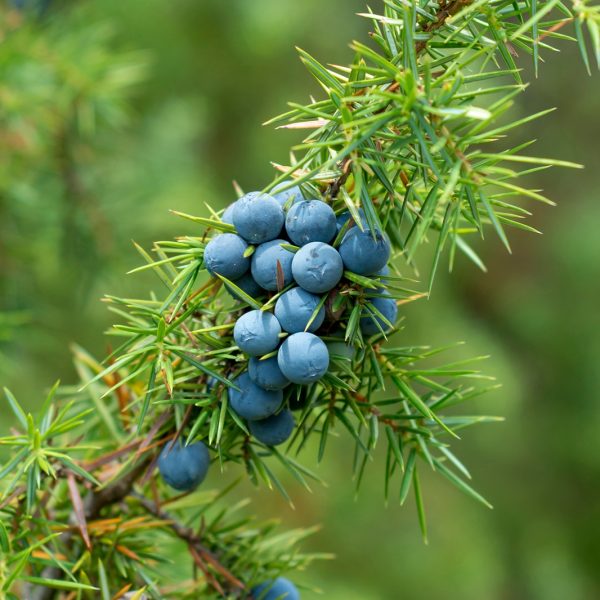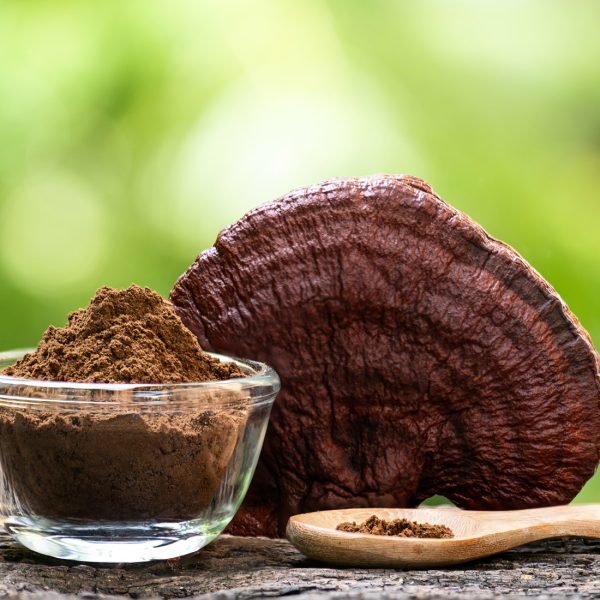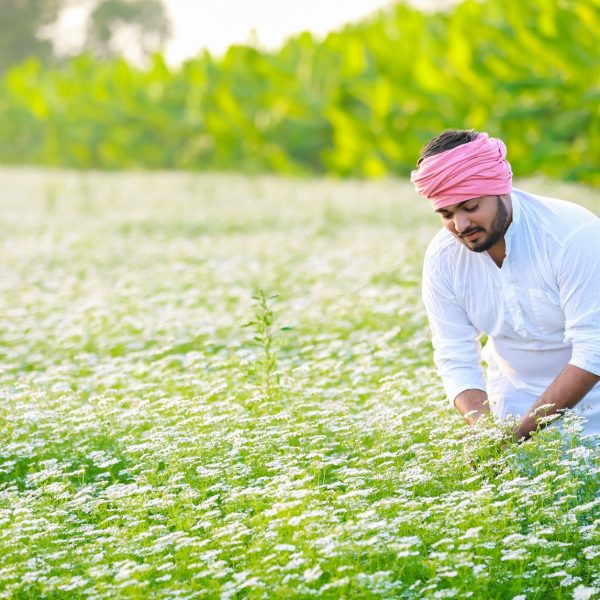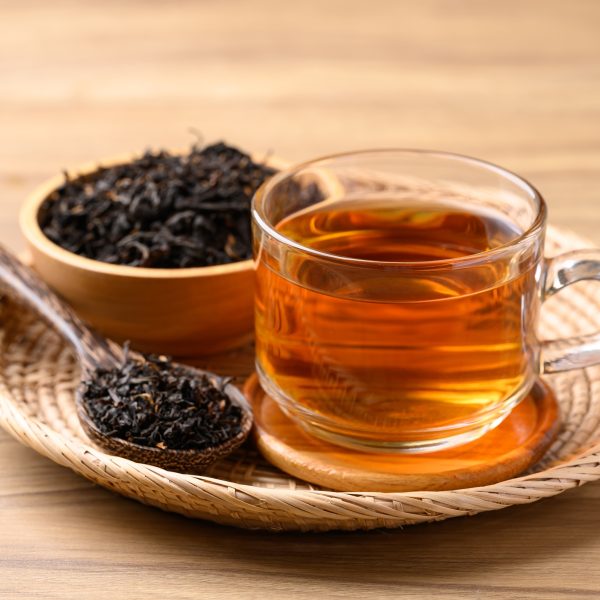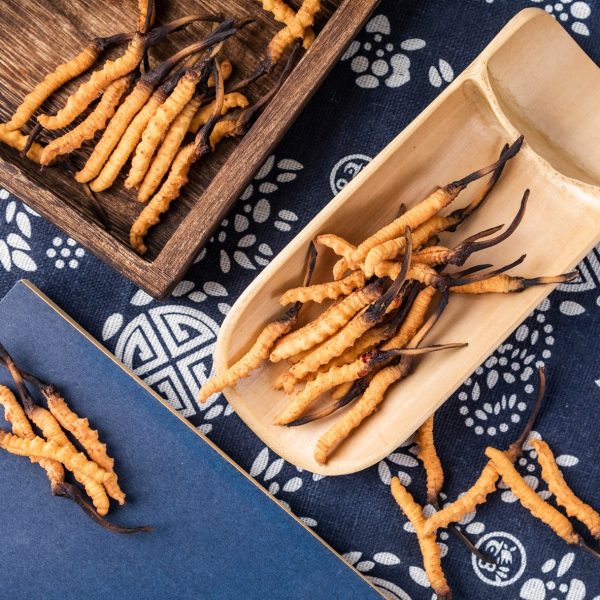Persistent tiredness, also known as fatigue, has a multitude of expressions and aetiologies in both TCM and allopathic medicine.
Understanding fatigue in TCM

Persistent tiredness has a multitude of expressions and etiologies in both TCM and allopathic medicine. From post-exam weariness to post-viral fatigue (as is often seen in ME/CFS) where utter exhaustion renders one bedbound, fatigue is a complex and, seemingly, pervasive aspect of modern life. Owing to this, the chronic nature of the condition and the clinical challenge it presents modern medicine, fatigue is perhaps the most common complaint seen in TCM clinics.
“Sheng zhi lai, wei zhi jing” (That which comes with life is called the essence)
“Fu jing zhe, shen zhi ben ye” (Essence is the root of the body. (1 p118))
TCM holds a sobering, yet wise, view of our individual capacity for vitality. Inherited from our parents at the moment of conception in the form of jing (vital essence), it is etched in stone before we have taken our first breath. Essence resides in the (TCM) Kidneys and is the basis of kidney qi – our body’s primary motive force and the source of all yin and yang energies in the body. The amount of essence we receive determines our lifelong constitution and is finite. If respected and protected for the gift that it is (in TCM it is called a ‘bao’ or ‘treasure’), it may be preserved and optimised to foster long, healthy and dynamic lives (1-3).
How does fatigue work in TCM?

Each day we produce qi (energy) and blood from the air we breathe and the food and drink we consume. If our daily expenditure is within that being made, we create surplus qi and blood and this supports our jing, so that we dip in to it only as much as is necessary. When qi and blood production is inadequate or our stores of jing depleted, we will experience tiredness or even exhaustion (xu lao).
The translation of xu lao (xu-deficiency, lao-tiredness) is telling as deficiency – of qi, blood, yin or yang – is typically at the root of chronic tiredness. However, excess and combined excess-deficient patterns are also common and this is a very important distinction to make as they require different treatment approaches. Tonifying in a case of excess will exacerbate symptoms. In combined patterns, we must often clear the excess aspect (e.g. phlegm) before tonifying the deficiency (e.g. Spleen qi deficiency).
- Deficient patterns: Deficiency of qi, blood, yin or yang.
- Excess patterns: Traditionally relate to the presence of dampness, phlegm and qi stagnation. In the latter, the resources are there, they are simply rendered inaccessible by poor circulation. Where dampness prevails, the body’s fluids stagnate and can accumulate forming phlegm.
- Combined deficient-excess patterns: These are clinically far more common. An important, and timely, example being residual pathogenic factor (e.g. post-viral fatigue), where an underlying deficiency both enables an ‘invasion’ of an external pathogenic factor (virus, bacteria etc) and undermines the body’s ability to adequately expel it. It is also a combined condition in the sense that the trapped pathogen (typically heat with damp or phlegm) will, over time, lead to or exacerbate a state of deficiency (often qi or yin). Unfortunately, this deficiency then leaves us vulnerable to further pathogenic attacks. (2-5)
Understanding the root
While such biomedical conditions as anaemia, cancer and hypothyroidism must always be ruled out in cases of persistent fatigue, some common causes of tiredness from the TCM perspective include:
- A weak constitution: Inherited weak jing/ Kidney qi
- Overwork (both mental and physical, including excessive physical exercise) and inadequate rest – Kidney and Spleen deficiency
- Lack of exercise: Qi stagnation, dampness
- Stress and/ or depression: Stagnate Liver qi
- Chronic worry or fear: Injure the Spleen and Kidney qi
- Diet lack of adequate nutrition: Blood and qi deficiency, excessive damp-forming foods (cold, raw, greasy, sweetened foods, alcohol, dairy and (for some) wheat) – damp, excessive caffeine – yin deficiency, overeating – dampness
- Chronic bacterial or viral infections: Made more likely by not resting during the acute phase of the infection and/ or an underlying deficiency (e.g. defensive qi (immunity), Kidney qi). Inadequate rest during acute illness renders our defensive qi unable to fight off the pathogenic factor(s). TCM holds that while antibiotics kill bacteria, they do not clear heat or resolve phlegm or damp, but actually weaken the Spleen, creating more damp and deficiency.
- Chronic illness: Kidney and Spleen deficiency
- Childbirth: A long labour, heavy loss of blood during labour and/ or where the mother has not been adequately rested and tonified afterwards – Kidney, qi and blood deficiency
- Recreational drug use: Kidney and Liver deficiency
- Candida infection: Often presents as a damp pattern
- Excessive sexual activity: Depletes jing (especially for men). ‘Excessive’ will be defined differently according to individual constitutions. (3-6)
Signs and symptoms
There are a plethora of TCM bodily patterns for tiredness. These are understood by whether they are excess or deficient in nature and which energies, substances and organ(s) are affected.
In a very general nutshell, accompanying signs and symptoms can include:
- Excess: The radial pulse will feel ‘full’ rather than weak. The pulse is the primary indicator of whether a pattern is excess or deficient. As most cases are combined excess-deficient, the pulse also indicates which predominates.
- Deficient: ‘Weak’ radial pulse
- Damp: Feeling of heaviness (worse for rest) with aching limbs and muscles (the greater the ache, the more damp present), ‘fogginess’
- Phlegm: As per damp with mucus, sensation of oppression of the chest
- Qi stagnation: Mental tension, irritability, a pulse that feels taught like a guitar string
- Qi deficiency: Weakness, pale tongue, loose stools (Spleen), frequent colds (Lung), palpitations (Heart)
- Blood deficiency: Pale tongue and face
- Yang deficiency: Exhaustion, cold signs and sensations, pale, swollen tongue
- Yin deficiency: Exhaustion, anxiety, insomnia, a red, dry tongue, heat signs and sensations, (especially in the afternoon and evening)
- Residual pathogenic factor: Generally a combination of damp-heat or damp–phlegm signs following an acute invasion by a pathogenic factor (virus, bacteria etc). (3-6)
Common patterns include:
- Spleen qi deficiency: Tiredness, poor appetite, loose stools, weak limbs, poor digestion, gas and bloating, prolapsed organs, a pale tongue with teeth marks and a weak pulse.
- Liver qi stagnation with Spleen qi deficiency: As above plus tension, moodiness, PMT, tongue may be red on the sides, pulse is taught (if Liver qi stagnation predominates).
- Spleen and Heart qi deficiency: As per Spleen qi deficiency plus palpitations, depression, timidity, a midline crack on the tongue.
- Kidney yin deficiency: Exhaustion, soreness of the lower back, malar flush, nightsweats, waking at night, a red tongue with no ‘coat’ and a fast, thin and weak pulse. (4,6,7)
Herbal solutions
While a greater quantity of high quality research in to TCM for fatigue is needed, recent research studies yield promising results, indicating that treatment with TCM may be both beneficial and free of side effects. (8)

Common formulas for the above patterns include:
Bu Zhong Yi Qi Tang (BZYQT): Tonify the Centre and Boost the Qi Decoction
This is a classic formula for treating fatigue from deficient and ‘sunken’ qi. (9) BZYQT and XCHT (below) combined have shown favourable results in research trials for the treatment of CFS from Liver qi stagnation with Spleen qi deficiency. (7,8)
This formula contains:
- Huang qi (Radix Astragali, Astragalus root)
- Ren shen (Radix Ginseng, Ginseng) or dang shen* (Radix Codonopsis, Codonopsis)
- Bai zhu (Rhizoma Atractylodis Macrocephalae, white Atractylodes)
- Dang gui (Angelica Sinensis, Chinese angelica root)
- Chai hu (Bupleurum Chinensis, Bupleurum)
- Sheng ma (Cimicifuga Foetida, Black Cohosh)
- Chen pi (Citrus Reticulata, aged tangerine peel)
- Zhi gan cao (honey-fried Radix Glycyrrhizae, Licorice root)
Xiao Chai Hu Tang (XCHT): Minor Bupleurum decoction
Tonifies qi whilst clearing damp-heat and Liver qi stagnation. It can be used in cases of fatigue from excessive alcohol intake and is the main formula for Shaoyang syndrome – a residual pathogenic factor pattern where the body produces alternating chills and fever in its attempt to push the invading pathogen from the interior to the exterior and thus expel it. (9)
This formula contains:
- Chai hu (Bupleurum Chinensis, Bupleurum)
- Huang qin (Scutellaria Baicalensis, Scutellaria)
- Ban xia (Rhizoma Pinelliae, Pinellia rhizome)
- Sheng jiang (Zingiberis Officinalis, fresh ginger)
- Ren shen (Radix Ginseng, Ginseng) or dang shen* (Radix Codonopsis, Codonopsis)
- Zhi gan cao (honey-fried Radix Glycyrrhizae, Licorice root)
- Da zao (Ziziphus Jujuba, Jujube).
Gui Pi Tang (GPT): Restore the Spleen decoction
GPT tonifies Spleen qi and Heart blood and is particularly effective for cases of deficiency from over-thinking, worry or studying where digestion and sleep have been affected. (9) Recent research studies have found it a useful treatment for CFS with Spleen qi and Heart blood deficiency. (7)
Both BZYQT and GPT have been shown to have positive immune-regulating effects. Beneficial for treating CFS, known for its irregular immune presentations. (8)
This decoction contains:
- Huang qi (Radix Astragali, Astragalus root)
- Ren shen (Radix Ginseng, Ginseng) or dang shen* (Radix Codonopsis, Codonopsis)
- Bai zhu (Rhizoma Atractylodis Macrocephalae, white Atractylodes)
- Fu ling (Poria Cocos, Polyporaceae fungi)
- Dang gui (Angelica Sinensis, Chinese angelica root)
- Mu xiang (Radix Aucklandiae Lappae, Costuss root)
- Long yan rou (Euphoria Longan, Longan fruit)
- Suan zao ren (Zizyphus Spinosae, Jujube seeds)
- Yuan zhi (Radix Polygalae Tenuifoliae, Chinese Senega root)
- Sheng jiang (Zingiberis Officinalis, fresh ginger)
- Da zao (Ziziphus Jujuba, Jujube)
- Zhi gan cao (honey-fried Radix Glycyrrhizae, Licorice root)
* When substituting dang shen for ren shen, 2-3 times the dosage is needed.
Liu Wei Di Huang Tang: Six ingredients Rehmannia pill
This is a Kidney yin tonic formula including shu di huang (Rehmannia Glutinosa, Chinese Foxglove root) and shan zhu yu (Cornus Officinalis, Chinese Dogwood berries) shown to enhance the cognitive ability in dementia patients and the elderly (8) and may, therefore, be appropriate for CFS patients who fit the Kidney yin deficiency pattern and experience ‘brain fog’ (poor memory, difficulty concentrating, confusion etc.).
Medicinal mushrooms
In particular, ling zhi (Ganoderma Lucidum, Reishi) and dong chong xia cao (Cordyceps Sinensis, Cordyceps) are well-known tonics that benefit the immune system and may be taken daily for extended periods. “The proven ability of mushroom nutrition to promote a shift away from a Th2dominant immune response and increase anti-viral activity makes it a natural source of support for CFS patients with good clinical results” (10 p99).
Holistic solutions
- Rest is of vital importance. However, for those with excess conditions, rest may exacerbate symptoms.
- Exercise is also critically important but should be tailored to the individual. One approach will not necessarily work for all. In TCM, excess conditions such as qi stagnation and dampness will readily benefit from physical activity but deficiency patterns will need to tread carefully so as not to worsen their condition. Qi gong and breathing techniques where the aim is to cultivate qi are ideal in these situations.
- Meditation helps to curb the impact of chronic difficult emotions.
- Diet needs to be individualised. For example, damp patterns will do well to limit or avoid damp-forming foods and bone broths, while excellent tonics for qi, blood and jing may not be appropriate for those with heat or yin deficiency.
- For the sore throat so frequently present in CFS, pear juice may be sipped frequently. (11)
- Acupuncture is especially helpful for cases of stagnation and addressing individual symptoms associated with fatigue such as headache, insomnia and depression. Herbs, however, are perhaps more appropriate in cases of deficiency of blood, yin and yang and for resolving phlegm and damp. Acupuncture may also be beneficial from an immunomodulatory viewpoint. (12)
- Moxibustion made from the herb ai ye (Artemisia Vulgaris, Mugwort), moxa is used to warm acupuncture points and areas of the body and is an excellent adjunctive treatment in cases of lowered immunity, damp, cold, qi, blood or yang deficiency. (6)
References
- Flaws B. Statements of Fact in Traditional Chinese Medicine. 9th ed. Boulder: Blue Poppy Press; 2010.
- Kaptchuk T. Chinese Medicine: The Web That Has No Weaver. 2nd ed. London: Rider Books; 2000.
- Maciocia G. The Foundations of Chinese Medicine: A Comprehensive Text for Acupuncturists and Herbalists. Edinburgh: Churchill Livingstone; 1989.
- Maciocia G. Diagnosis in Chinese Medicine: A Comprehensive Guide. Edinburgh: Churchill Livingstone; 2004.
- Maciocia G. “Myalgic Encephalomyelitis (ME)”. http://www.acupuncture.com/Conditions/cfids_me.htm. Accessed January 12 2022.
- Tierra L. Healing with the Herbs of Life. New York: Crossing Press; 2003.
- Zhang X et al. “Advances in Clinical Research on Traditional Chinese Medicine Treatment of Chronic Fatigue Syndrome”. Evidence-Based Complementary and Alternative Medicine, December 2 2020. doi.org/10.1155/2020/4715679
- Chen R et al. “Traditional Chinese Medicine for Chronic Fatigue Syndrome”. Evidence Based Complementary and Alternative Medicine. 2010 Mar; 7(1): 3–10. doi: 10.1093/ecam/nen017
- Barolet R, Bensky D. Chinese Herbal Medicine: Formulas and Strategies. Washington: Eastland Press Inc.; 1990.
- Powell M. Medicinal Mushrooms: A Clinical Guide. Eastbourne: Mycology Press; 2010.
- Maclean W, Lyttleton J. Clinical Handbook of Internal Medicine: The Treatment of Disease with Traditional Chinese Medicine. Vol 1. Sydney: University of Western Sydney; 1998.
- Volf N, Ferdman L. “The Mechanisms of Immunomodulation in Acupuncture”. International Journal of Complementary and Alternative Medicine, 2017. 9(6): 00320. doi: 10.15406/ijcam.2017.09.00320.

